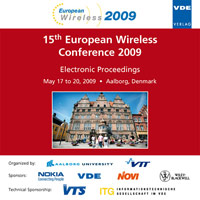Feasibility Study of Downlink Transmission with 256 QAM Based on Results of MBWA System Field Trial
Konferenz: European Wireless 2009 - 15th European Wireless Conference
17.05.2009 - 20.05.2009 in Aalborg, Denmark
Tagungsband: European Wireless 2009
Seiten: 5Sprache: EnglischTyp: PDF
Persönliche VDE-Mitglieder erhalten auf diesen Artikel 10% Rabatt
Autoren:
Kameda, S.; Oguma, H.; Takagi, T.; K. Tsubouchi (Research Institute of Electrical Communication, Tohoku University, Sendai, Japan)
Izuka, N.; Asano, Y.; Yamazaki, Y. (Network System Research Center, Softbank Telecom, Tokyo, Japan)
Inhalt:
In this paper, we report on a mobile broadband wireless access (MBWA) system field trial with Fast Low-latency Access with Seamless Handoff Orthogonal Frequency Division Multiplexing (FLASH-OFDM), which was carried out at Sendai city in Japan. This paper discusses the feasibility of downlink transmission with the maximum modulation level of 256 quadrature amplitude modulation (QAM), using the received signal level and throughput under the measurement condition of the maximum modulation level of 64 QAM. The feasibility study results show that 256 QAM yields a higher downlink throughput than 64 QAM within coverage of 1.2 km when the base-station antenna height is 84 m. The results are validated by evaluating the downlink throughput performance in the field trial under the measurement condition of the maximum modulation level of 256 QAM. It is considered that 256 QAM is feasible to provide a mobile broadband data communication service to subscribers in an urban area.


